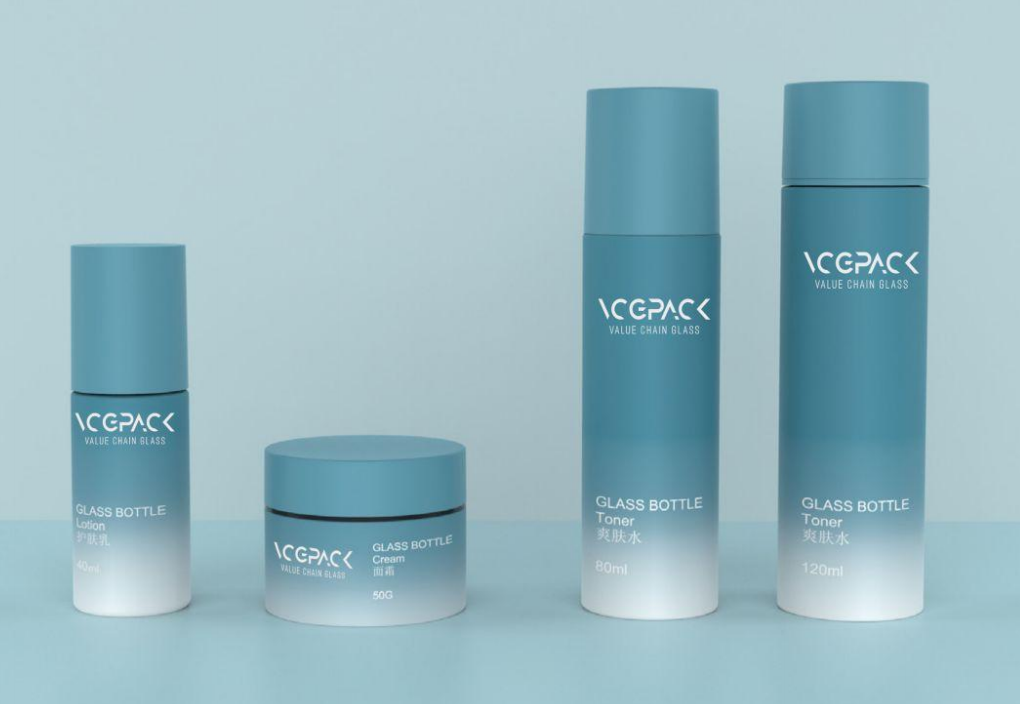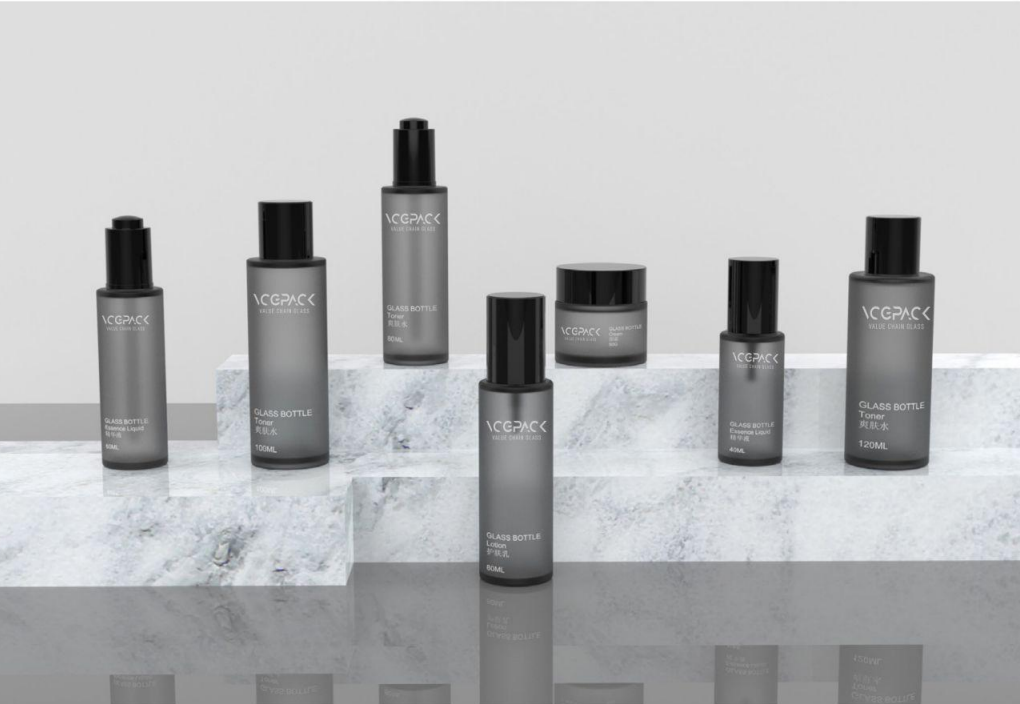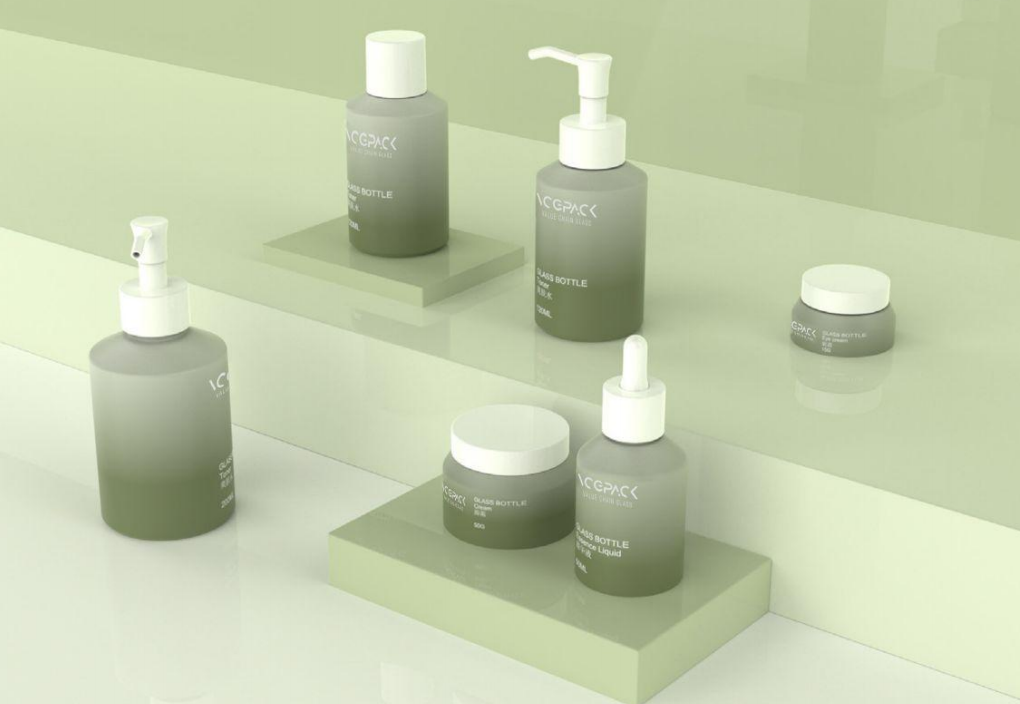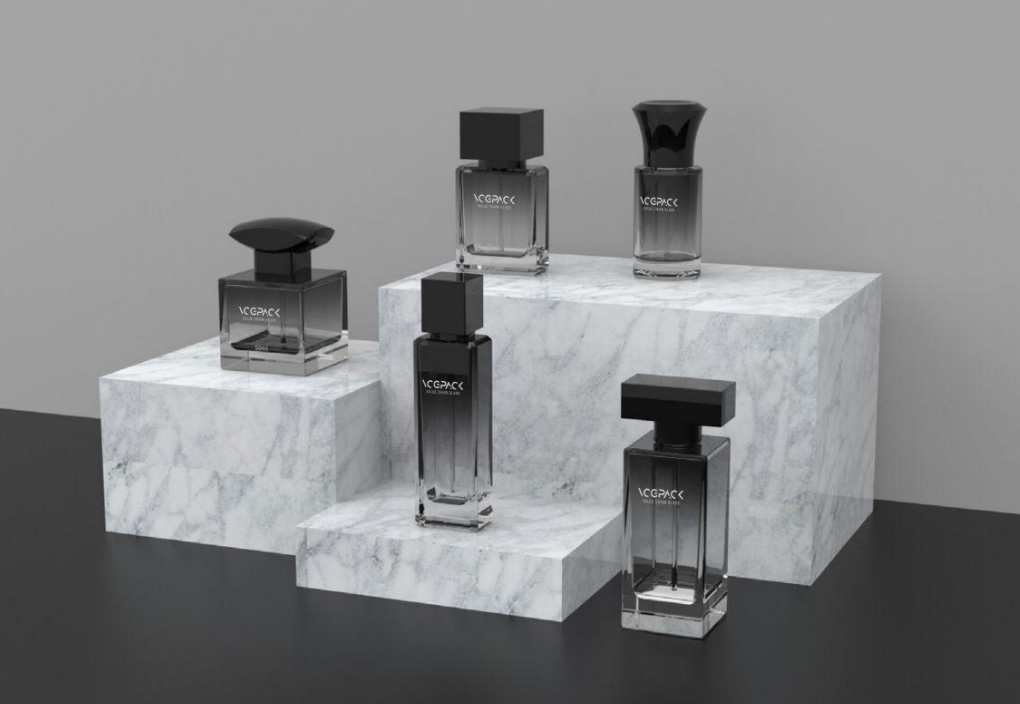Glass Container
Glass Container
Glass containers in the cosmetics industry are crafted from raw materials like silica sand, limestone, barium sulfate, boric acid, borax, and lead compounds.
These materials are combined with clarifiers, colorants, decolorizers, and opacifiers to enhance their appearance.
The manufacturing process involves drawing and blow molding techniques to create high-quality glass bottles.
Known for their excellent barrier properties, glass bottles are ideal for skincare and cosmetic packaging, providing a premium look and protecting products from external contaminants, making them a preferred choice for luxury brands.
VCPAK is a glass container supplier specializing in premium packaging solutions for cosmetics and skincare. We offer a range of glass bottles and jars, known for their superior clarity, durability, and excellent barrier properties, making them ideal for products like serums, creams, and perfumes.
Our glass containers are highly customizable with options such as silk-screen printing, frosting, and custom colors. VCPAK’s expertise lies in providing luxury, eco-friendly packaging that enhances product protection while elevating your brand’s presentation, perfect for high-end cosmetic lines.

PureLine Glass Skincare Bottle Series

SlateLine Glass Skincare Bottle Series

SlopeCurve Glass Skincare Bottle Series

EdgeAura Glass Perfume Bottle Series
Discover More Glass Container Styles?
Glass Bottle Manufacturing Process for Skincare Packaging
1. Forming Process
The manufacturing process starts with designing and crafting molds tailored for specific bottle shapes. Key raw materials like silica sand, combined with limestone, soda ash, and other additives, are melted at temperatures exceeding 1,400°C. This molten glass is shaped through blow-and-blow or press-and-blow techniques. The formed bottles then undergo annealing to enhance their durability and resistance to breakage, a crucial factor in cosmetic packaging.
2. Surface Treatment
To elevate the aesthetic appeal, glass bottles can be treated with finishes like spraying, UV coating, frosting, and electroplating. The surface treatment process involves cleaning, degreasing, and drying to ensure coatings adhere properly. High attention is given to coating thickness, uniformity, and adhesion quality, which are essential for premium cosmetic containers.
3. Graphic and Text Printing
Decoration is a vital step that involves adding branding and design elements to the glass bottles. Techniques include hot stamping, silk-screen printing with high or low-temperature inks, and applying decals or multi-layer prints. These methods enhance the visual appeal and brand presence, making the bottles ideal for high-end skincare packaging. Advanced decorative techniques add depth and luxury, perfect for the cosmetic or skincare brands.
Glass Container Product Structure
1. Bottle Body
- By Neck Type: Wide-mouth bottles, narrow-mouth bottles.
- By Material Color: Regular white, high white, crystal white, milky white, amber, green.
- By Shape: Cylindrical, oval, flat, polygonal, conical.
- Common Capacities: 5ml, 10ml, 15ml, 20ml, 25ml, 30ml, 50ml, 55ml, 60ml, 75ml, 100ml, 110ml, 120ml, 125ml, 150ml, 200ml.
2. Bottle Neck Sizes
- Common neck sizes: Φ18/400mm, Φ20/400mm, Φ22/400mm.
- Wide-mouth bottles: Φ33mm, Φ38mm, Φ43mm, Φ48mm, Φ63mm, Φ70mm, Φ83mm, Φ89mm, Φ100mm.
- Tubular bottles: Φ10mm, Φ15mm, Φ20mm, Φ25mm, Φ30mm.
3. Accessories
Glass bottles are commonly paired with accessories such as inner plugs, large caps or rubber droppers, pipettes, aluminum caps, plastic pump heads, aluminum pump heads, and outer bottle caps.
Solid creams often pair best with wide-mouth bottles and aluminum or plastic caps, which can be further customized with color spraying.
Emulsions and liquid formulations are ideally suited for narrow-mouth bottles with pump heads or specialized caps, depending on the viscosity of the product.
This tailored approach ensures that each packaging solution meets the specific needs of the product.
The table below clearly describes common pairing methods.
| Product Type | Suitable Bottle Type | Recommended Closure | Additional Information |
|---|---|---|---|
| Solid creams | Wide-mouth bottle | Aluminum cap or plastic cap | Caps can be color-sprayed |
| Emulsions or liquids | Narrow-mouth bottle | Pump head | Use inner plugs for caps |
| Liquid formulations | Narrow-mouth bottle | Cap with small-hole inner plug | Suitable for watery formulations. |
| Thick emulsions | Narrow-mouth bottle | Cap with large-hole inner plug | Best for thicker creams and emulsions |
Purchasing Considerations for Glass Cosmetic Containers
1. Minimum Order Quantity (MOQ):
Due to glass manufacturing constraints, MOQs typically range from 30,000 to 100,000-200,000 units if no stock is available.
2. Manufacturing Lead Time:
Production cycles are generally 30 to 60 days. Larger orders tend to yield more stable quality. However, glass bottles can be costly to store and transport due to their weight and fragility.
3. Mold Costs:
- Hand molds: about $500 per set.
- Automatic molds: approximately $800 per set.
- 1-out-4 or 1-out-8 molds: range from $3,200 to $6,400 per set, where “1-out-4” means the mold produces 4 bottles per cycle, and “1-out-8” produces 8 bottles per cycle, improving efficiency and lowering per-unit costs.
4. Printing and Decoration Costs:
- Spraying: $0.10 to $0.22 per piece, depending on coverage and color complexity.
- Silk Screen Printing: $0.1 per color; cylindrical bottles are counted as single color, irregular shapes as multi-color.
- Hot Stamping: $0.1 per design.
- Bottle Types: Clear, frosted, and colored bottles, including special types like white porcelain and essential oil bottles, often cost more due to higher-order requirements.
- Ink Types: High-temperature inks offer long-lasting, muted colors but are harder to match for shades like purple. Low-temperature inks are more vibrant but require high-quality inks to avoid peeling; these bottles must be carefully sterilized.
The Application of Glass Containers in Cosmetic Packaging
Glass Containers: The Second Largest Category in Cosmetic Packaging
Glass containers are widely used in the cosmetic packaging industry, valued for their premium look, excellent barrier properties, and ability to preserve the integrity of various formulations.
This packaging choice is particularly popular for products like creams, perfumes, nail polishes, serums, toners, and essential oils.
Creams and Lotions
Glass jars are often chosen for creams and lotions due to their airtight seals and non-reactive properties, ensuring that the formulations remain stable.
Perfumes
Glass perfume bottles are a staple in luxury packaging, as they provide a high-end feel and protect volatile fragrances from environmental factors. The clear or tinted glass also allows the beautiful colors of the perfumes to be displayed.
Serums and Essential Oils
For serums and essential oils, glass bottles provide an excellent barrier against oxidation, UV light, and contamination. They help maintain the efficacy of active ingredients, making them ideal for high-performance skincare products.
Nail Polish
Glass bottles are commonly used for nail polish because of their resistance to the solvents found in these formulations. They prevent evaporation and maintain the consistency of the product.
In Summary
Glass containers are not just functional; they elevate the entire product experience. Whether it’s a luxurious cream or a high-end fragrance, the right glass packaging—such as those provided by VCPAK—can significantly enhance a brand’s appeal in the market.

